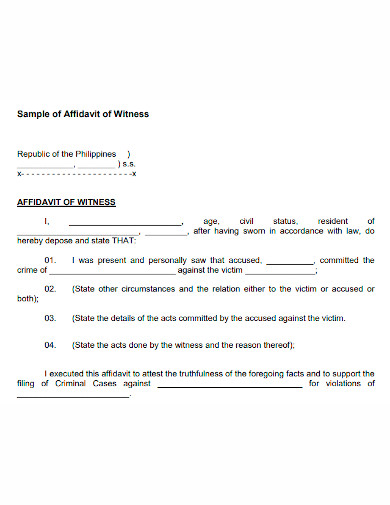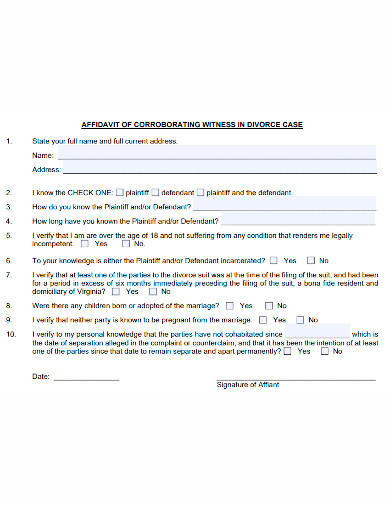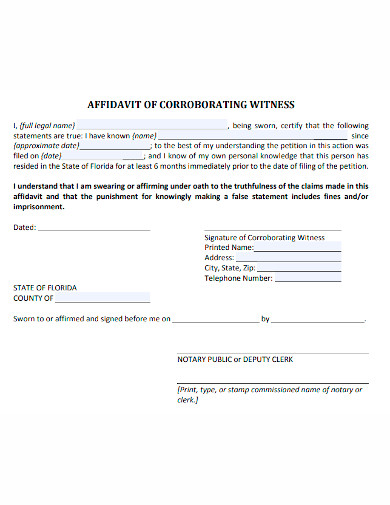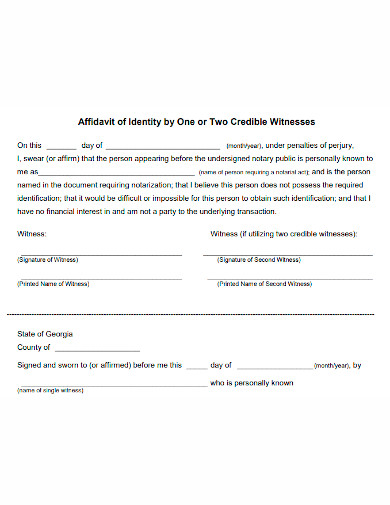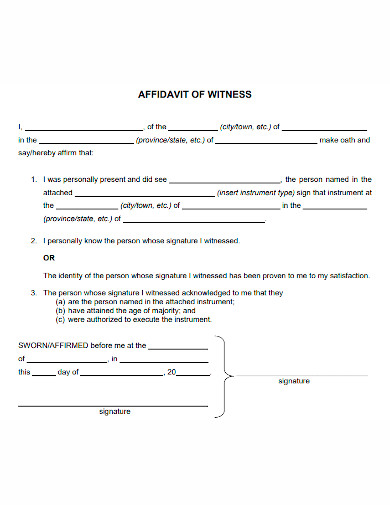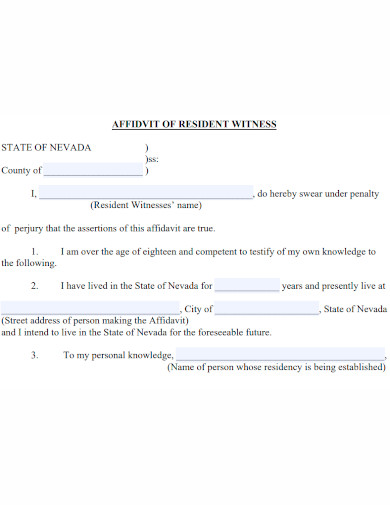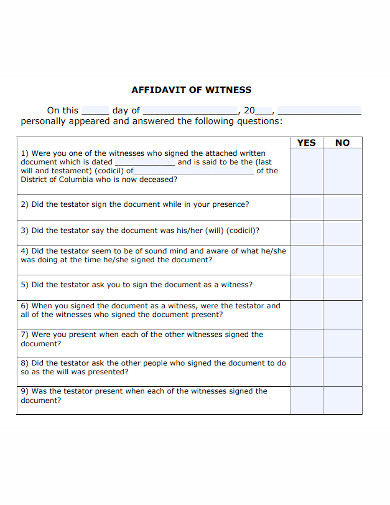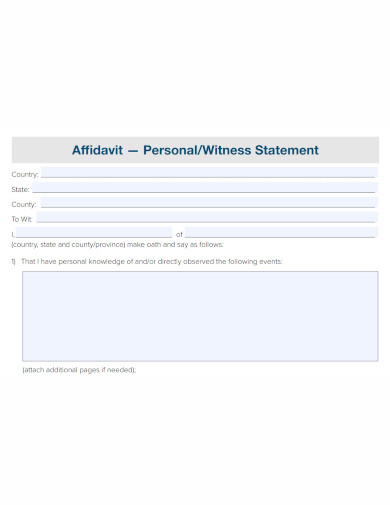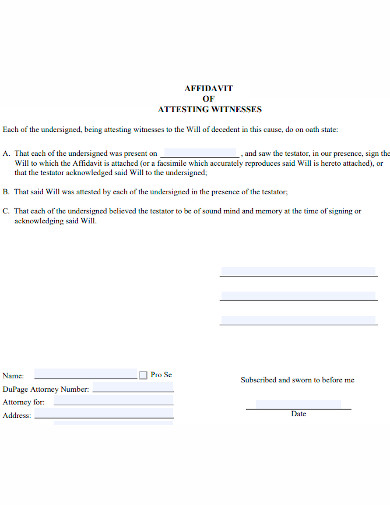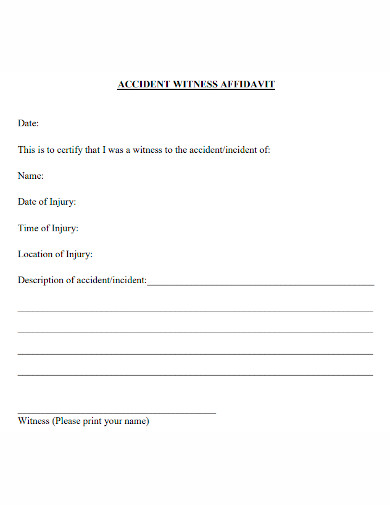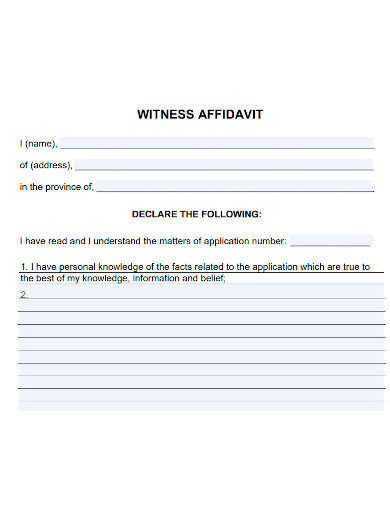There are some situations in which some individuals have witnessed altercations or anyone violating laws that could result in a criminal or civil case that will be taken up in court. Witnesses are vital in helping prove court cases since they have personal, first-account knowledge of an incident by converting their testimonies or providing affidavits of witnesses. If you found yourself in this situation and need to provide an affidavit, this article can help you on how to properly write an affidavit of witness.
10+ Affidavit of Witness Samples
1. Affidavit of Witness Sample
2. Standard Affidavit of Witness
3. Affidavit of Corroborating Witness
4. Printable Affidavit of Witness
5. Editable Affidavit of Witness
6. Affidavit of Resident Witness
7. Formal Affidavit of Witness
8. Professional Affidavit of Witness
9. Affidavit of Attesting Witness
10. Affidavit of Accident Witness
11. General Affidavit of Witness
What is an Affidavit?
An affidavit is a written statement voluntarily given by the person who swears and signs to the affidavit, also known as the affiant. An affidavit of witness contains the facts that a witness has knowledge that is crucial to criminal or civil cases. The document is used in court proceedings and other legal matters that have been witnessed and notarized by another party.
How to Write an Affidavit of Witness
An affidavit is a legal document, so meaning it is formally written and there is a right way to write one. Anyone can write an affidavit; however, an attorney must first notarize the document before it will be considered valid. An attorney can also guide you on how to write an affidavit correctly. To guide you on writing the affidavit of witness, below are the following steps that are important to be included in the affidavit:
1. Title of the Affidavit
The first thing to put in the affidavit is the title. The title must describe what the sworn statement is all about. Include both your name and the main topic of the affidavit; if the affidavit will be submitted before a court, don’t forget to include the name of the court, the name of the county and state, the name of all the parties involved in the case, and the case number.
2. Statement of Identity
The next part of the affidavit is the statement of identity where you introduce yourself by putting your personal information such as your name, age, occupation, place of residence, and any other information relevant to the situation or case.
3. Statement of Truth
The next section of the affidavit is the statement of truth. You must identify yourself in the statement of truth and acknowledge that you agree not to lie in your affidavit. It should be written in the first-person point of view.
4. Convey the Facts
The next section is to state all the facts that you witnessed in the situation pertaining to the case. Make sure your facts are accurate, objective, clear, and concise. State all the facts as to how you remember them. Provide details like names, dates, times, and addresses. To help you make a coherent statement, make an outline of everything you recall about the situation and decide which facts are important to put in the affidavit. Tell the facts in chronological order. Reference any documents that will support your account.
5. Repeat Your Statement of Truth
After you told all the facts, the next section is to conclude your affidavit with another statement of truth. Put in a quick summary of everything that every fact you mentioned is “true to the best of my knowledge”.
6. Sign and Notarize the Affidavit
The final part to make your affidavit complete is to have signed it and have it notarized. When you sign the affidavit, make sure a licensed witness like an attorney is in your presence. Don’t sign the affidavit without a witness. If your affidavit is longer than one page, each page must have your signature. If there are any changes that you made at the time when you have the affidavit notarized, sign those alterations. Be sure to bring an official identification when you notarize your affidavit.
FAQs
What are the types of affidavits?
There are many different types of affidavits. Some well-known affidavits are court affidavits, self-proving affidavits, power of attorney affidavit, financial affidavit, affidavit of loss, and affidavit of identity theft.
How much does it cost to have an affidavit signed?
The cost of having an affidavit signed depends on how much work has to be done to prepare to complete the affidavit. If you’re paying for a notary to sign your affidavit, it will cost between $5 to $10, depending on which state you will have it signed. If a legal person has to prepare the affidavit, they will charge around $75 to $100.
What is difference between affidavit and notary?
The difference between an affidavit and a notary is that an affidavit requires the services of a notary while a notary is a legal person (usually an attorney) authorized to verify the claims made by people in the affidavit.
An affidavit can have different rules on writing it depending on what jurisdiction you belong to local laws differ from one jurisdiction to another and they also have a certain format of writing affidavit to follow. Make sure to check the requirements of writing an affidavit before you start. To help you draft your own affidavit, download our free sample templates provided above!
Related Posts
Weekly Schedule Samples & Templates
Contractual Agreement Samples & Templates
FREE 9+ Amazing Sample Church Bulletin Templates in PSD | PDF
Sample Business Card Templates
Sample Cashier Job Descriptions
Questionnaire Samples
FREE 10+ Sample HR Resource Templates in PDF
FREE 10+ HR Consulting Business Plan Samples in MS Word | Google Docs | Pages | PDF
FREE 49+ Sample Job Descriptions in PDF | MS Word
FREE 16+ Nonprofit Budget Samples in PDF | MS Word | Excel | Google Docs | Google Sheets | Numbers | Pages
FREE 13+ Academic Calendar Templates in Google Docs | MS Word | Pages | PDF
FREE 10+ How to Create an Executive Summary Samples in Google Docs | MS Word | Pages | PDF
FREE 23+ Sample Event Calendar Templates in PDF | MS Word | Google Docs | Apple Pages
Company Profile Samples
FREE 10+ Leadership Report Samples [ Development, Training, Camp ]

